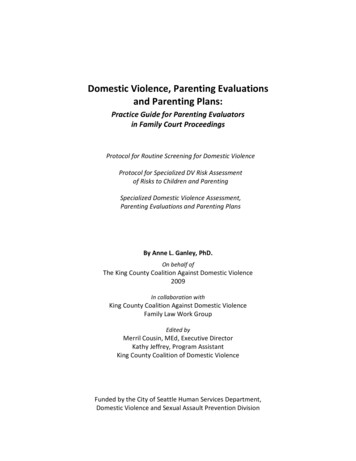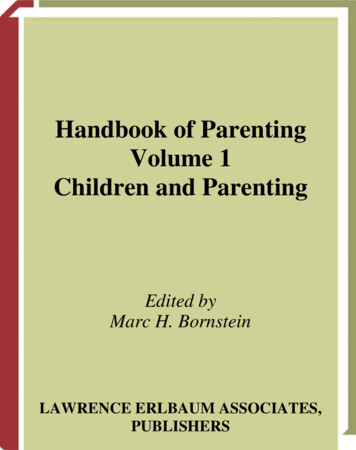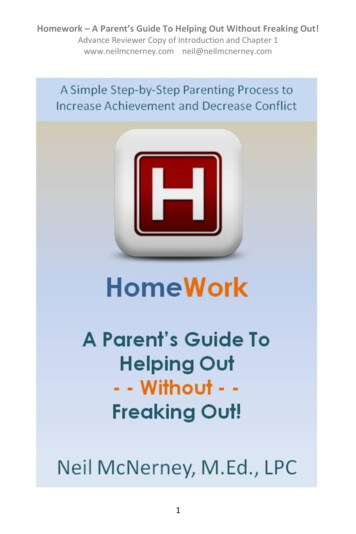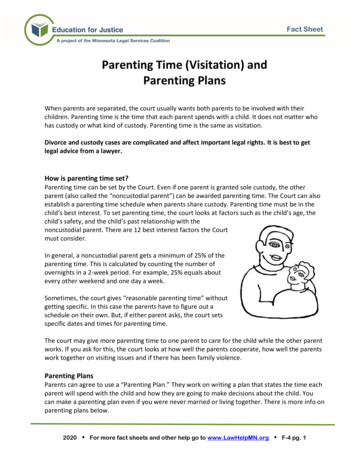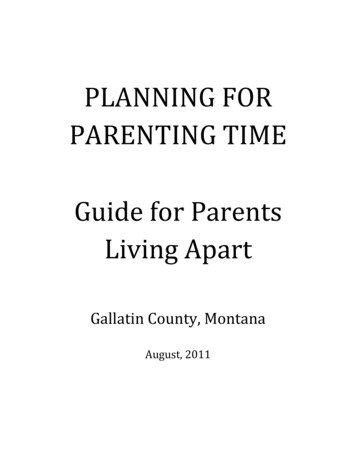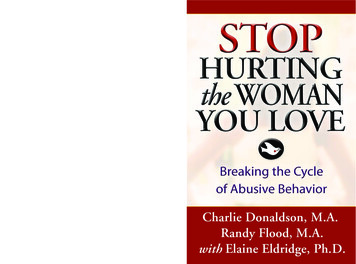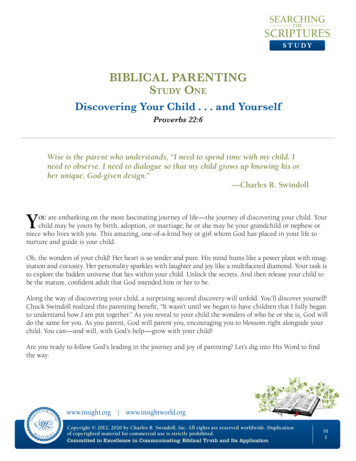
Transcription
CARINGFOR THEHURTINGA Training for CaregiversKenny Tello, LCSW, CAP, CCTP407-417-7430 ext. 2226kenny.tello@orlandohealth.com
Housekeeping ItemsCellphonesSharingQuestions
Learn about how children develop relationships.Learn basic information about the brain.Learn about the role of trauma in children’s behavioral problems.Learn practical strategies to help hurting children heal.Increase confidence in caring for these children.
PARENTING THEHURTING CHILD
Attachment Cycle
TRAUMA“A deeply distressing, unpleasant, difficult or disturbing experience”Examples: domestic violence,substance abuse exposure,threats, abuse, neglect,moving, loss, bullying, etc.Virtually anything canbecome traumatic.It depends on how the bodyand brain respond to theevent and how the childmakes sense of it.
The Brain The main purpose is to keep us alive. It develops from the bottom up. Information goes in from the bottom up. The brain is a historical organ. Freeze / Flight / Fight / Collapse All experiences shape the brain. Tolerance ———————— Sensitivity
Coherent NarrativeMaking Sense of What HappenedThis “making sense” involvesboth:The Top BrainThe Bottom BrainDiagnosis and the DSM 5
RELATIONSHIPSSeenSoothedSafeSecure
What Does NOT ity”
What DOES Work:TouchEye sonable Expectations
What Should You Do?Watch expectations.Parent children sequentially even if it doesn’tmake sense chronologically.Increase support system.Consequences without anger.Avoid control battles.Choose your battles.Interactions should never be a reward.Seek professional help when behaviors areextreme.Take care of yourself.
References Clark, L., & Robb, J. (2005). SOS help for parents: A practical guide for handling common everyday behaviorproblems. Bowling Green, KY: SOS Programs & Parents Press. Doherty, W. J. (1999). The intentional family: Simple rituals to strengthen family ties. New York: Avon Books. Eldridge, S. (1999). Twenty things adopted kids wish their adoptive parents knew. New York, NY: Dell Pub. Forbes, H. T., & Post, B. B. (2006). Beyond consequences, logic, and control: A love-based approach tohelping attachment-challenged children with severe behaviors. Orlando, FL: Beyond Consequences Institute. Gottman, J. M., & DeClaire, J. (1998). Raising an emotionally intelligent child. New York, NY: Simon &Schuster. Keck, G. C., Kupecky, R. M., & Mansfield, L. G. (2002). Parenting the hurt child: Helping adoptive familiesheal and grow. Colorado Springs, CO: Piñon Press. Perry, B. D., & Szalavitz, M. (2006). The boy who was raised as a dog: And other stories from a childpsychiatrist's notebook : what traumatized children can teach us about loss, love, and healing. New York:Basic Books. Purvis, K. B., Cross, D. R., & Sunshine, W. L. (2007). The connected child: Bring hope and healing to youradoptive family. New York: McGraw-Hill. Siegel, D. J. (2013). Brainstorm: The power and purpose of the teenage brain. Siegel, D. J., & Bryson, T. P. (2011). The whole-brain child: 12 revolutionary strategies to nurture your child'sdeveloping mind. New York: Delacorte Press. Siegel, D. J., & Hartzell, M. (2003). Parenting from the inside out: How a deeper self-understanding can helpyou raise children who thrive. New York: J.P. Tarcher/Putnam. Szalavitz, M., & Perry, B. D. (2010). Born for love: Why empathy is essential-- and endangered. New York:William Morrow.
The whole-brain child: 12 revolutionary strategies to nurture your child's developing mind. New York: Delacorte Press. Siegel, D. J., & Hartzell, M. (2003). Parenting from the inside out: How a deeper self-understanding can help you


